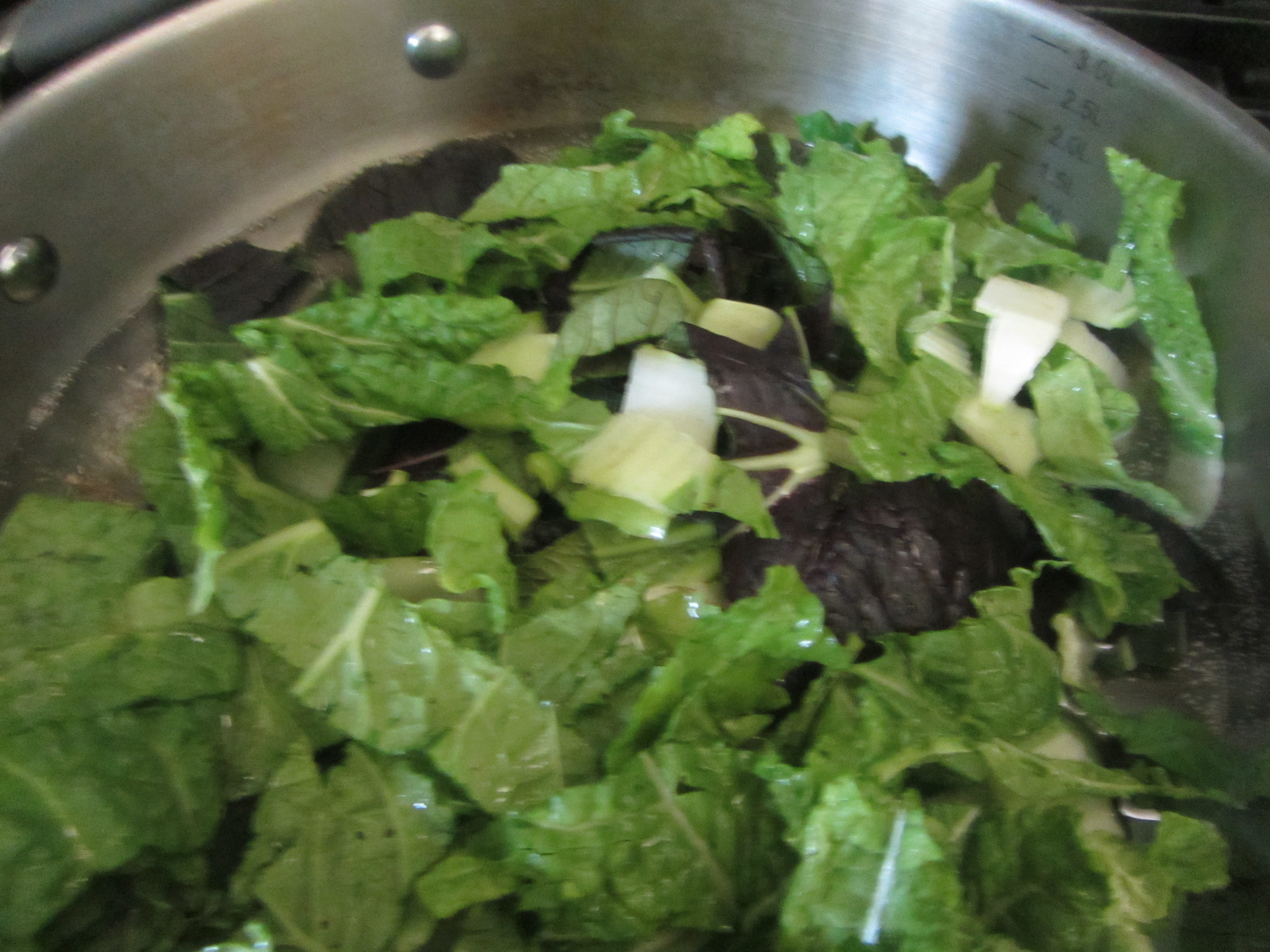I found red choi — a variety of bok choi with deep red leaves — at Wild Carrot Farm, an organic farm in northwest Connecticut. It was the first time I’d seen it and it reminded me of the endless variety in nature. I quick-sautéed the red choi with napa cabbage in water, and served it with slow-cooked soft,creamy polenta. Variety – in ingredients, cooking styles and menus – keeps the palate active and engaged in addition to fostering good health. So whenever you see an unfamiliar vegetable at the market…. try it. You might like it.
serves 2 (with leftover polenta)
INgredients
For the water-sautéed red choi and napa cabbage
5-6 leaves red choi
6-7 leaves napa cabbage
pinch sea salt
1 lemon
For the polenta
1 cup organic medium or coarsely ground corn meal (aka polenta or grits)
1 teaspoon sea salt, or to taste
2 basil leaves
½ teaspoon tekka powder
Process Begin by cooking the polenta. Pour 5 cups water into a medium-sized pot. Add a pinch sea salt and bring to a boil. Now pour the corn meal SLOWLY into the boiling water, whisking it as it hits the water to avoid clumping.
I am right-handed so I use my left hand to pour the corn meal and my right hand to whisk.
These moments are key to achieving a truly creamy, clumpless polenta. Once you have added the whole cup of corn meal, use a wooden spoon to mix it. The polenta will begin to bubble occasionally. Cook it, uncovered or partially covered for about 45 minutes, periodically scraping the pot’s bottom with a wooden spoon to prevent sticking.
If the polenta begins to get dry, you may have to add a bit of boiling water. Do so, as needed. The consistency should be that of a porridge: soft and creamy but not watery. When it reaches this consistency and smells sweet, ladle it into a bowl. Garnish with a basil leaf and sprinkle some tekka powder on top. Tekka is a Japanese condiment made by slow-cooking miso and root vegetables together for over 16 hours. Its rich mineral content helps strengthen the blood. Polenta is often served with melted cheese; this is a flavorful, delicious alternative.
Pour the remaining polenta into a deep glass dish (a small pyrex will do) and allow it to set. When it cools, place in the refrigerator. Cut it into 2-3-inch square pieces and fry in olive oil another day.
While the polenta is cooking, wash the red choi, napa and basil leaves well by immersing them in bowls of water, separately.
Chop the choi leaves and the napa leaves into 1-2-inch-wide pieces and set aside.
To a medium/large stainless steel skillet, add about one inch of water. Add a pinch of sea salt and bring the water to a boil. Put the napa cabbage into the water in the pan. As it begins to wilt, add the red choi.
When both vegetables are wilted (soft) and a more intense shade of green and red, respectively, use a wire mesh skimmer or a slotted spoon to remove them from the water. Squeeze the lemon and pour its juice over the vegetables and serve with the hot polenta.
©Nancy Wolfson-Moche 2014
« celery root chips with herbed brown rice and pressed salad
summer garden salad with quinoa tabouleh »








